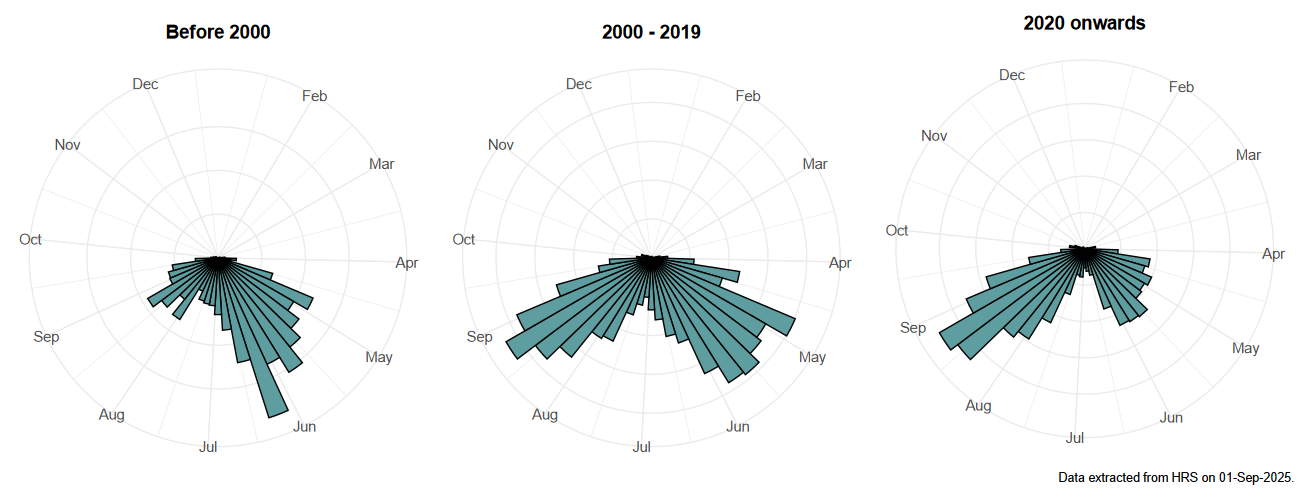Ferdinandea cuprea (Scopoli, 1763)
Identification
Identification difficulty = 1. ![]()
![]() according to Ball & Morris, 20241
according to Ball & Morris, 20241
Biology
The larva is usually found in sap runs on deciduous trees including those created by Goat Moth Cossus cossus, but it has also been found in the decaying roots of cultivated Globe Artichoke Cynara scolymus in France. When found, larvae are often numerous. They are adapted to manoeuvre into small spaces such as under bark, and remain hidden deep within the sap. The puparia usually occur under loose bark near a sap run. Adults are often found sunning themselves on tree trunks or posts, and sometimes visiting flowers such as Ranunculus. They usually occur in or near woodland, but can also be associated with trees in hedgerows, parks and other situations.
Flight period
The following plots show the number of unique records per week excluding those reported to be of immature stages.

Distribution
The majority of records lie south of a line between the Mersey and the Humber but there are localised concentrations north of this artificial line. There are scattered records throughout Scotland north to Sutherland.

Trends
The following plots show the Frescalo TFactor vs year and a map of the rescaled frequency (all records) for the species.
-
Ball, S., & Morris, R. (2024). Hoverflies of Britain and Ireland. WILDGuides (3rd ed.). Oxford: Princeton University Press. ↩

